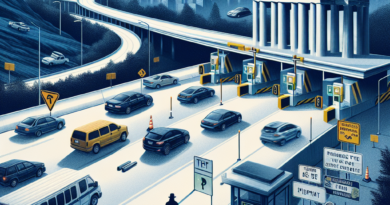Speed camera fines easier to cancel, here's why
With the reform of the Highway Code that the Meloni government is working on, the reasons for contesting a fine for speeding imposed following detection by speed cameras increase.
As promised by the Minister of Transport and Infrastructure, Matteo Salvini, the government is in fact considering a crackdown on the use of speed cameras, forcing local authorities to comply with stricter rules than those currently in force.
Which should lead to a reduction in the number of devices mounted on Italian roads, as well as greater possibilities of appealing against a speed camera fine.
In this regard, let's see how the rules for speed cameras in the city and on extra-urban roads can change and how they should reduce the chances of receiving a fine (and possibly challenging it) for speeding.
Stop speed cameras on these roads There are two new regulations that will change the rules for the use of speed cameras in Italy.
The first is the reform of the Highway Code (which we have already told you about) which intervenes mostly on the aspect of sanctions, to which is added a ministerial decree with which the use of speed cameras will be regulated by establishing the minimum requirements that it must have the road section on which the device must be mounted.
First of all, you will need to justify why you choose to mount the speed camera on that stretch of road.
In detail, there can be two reasons: on the one hand the high accident rate of that particular road stretch – which will have to be supported by data – while on the other the difficulty of stopping violators immediately (such as for a multi-lane road ).
In the presence of these conditions, the possibility of using a fixed-location speed camera to detect speed can be considered, whilst respecting certain conditions.
Let's start from urban roads, where before evaluating the installation of the speed camera it will be necessary to consider other alternative slowing down systems such as speed bumps.
Where this is not possible, then fixed speed camera stations can be used while respecting the following constraints: distance of at least 500 meters between one station and another and a ban on installation where the limit is more than 20 km/h lower than the general one ( 50 km/h); for urban, neighborhood and local roads, there may be stations more than 400 meters away but only when the speed limit is not lower than 50 km/h; Fixed-position speed cameras are permitted on urban cycle roads, or in any case on cycle-pedestrian itineraries, for stretches of at least 250 metres, with a speed limit of 30 km/h.
As regards extra-urban roads, however, the minimum distance between two detection devices must be at least: 4,000 meters on motorways; 3,000 meters on main extra-urban roads; 1,000 meters on other extra-urban roads.
As regards mobile speed cameras, however, the detector can be used exclusively on stretches of road with a speed limit no lower than 20 km/h compared to the general one for the type of road, with some exceptions for the slower stretches of road.
risky.
On urban streets the limits are the same as those envisaged for fixed positions.
Obligation of approval and periodic checks Another objective, to be achieved with the green light for the reform of the Highway Code, concerns the need to standardize the approval standards of devices, setting stricter rules for periodic checks of devices.
Rules which, if not respected, can lead to the cancellation of fines imposed: as established by the Constitutional Court with sentence no.
113 of 2015, periodic calibration of the devices used to ascertain speed limit violations is mandatory.
Fewer fines in the event of violations on the same road section.
The last, significant innovation concerns fines: in the event of a violation of the speed limit on the same road section but detected by multiple speed cameras there will still be only one fine (while up to now there can be as many as there are confirmed violations).
However, in the event of a further investigation, the fine applied is increased by a third.




